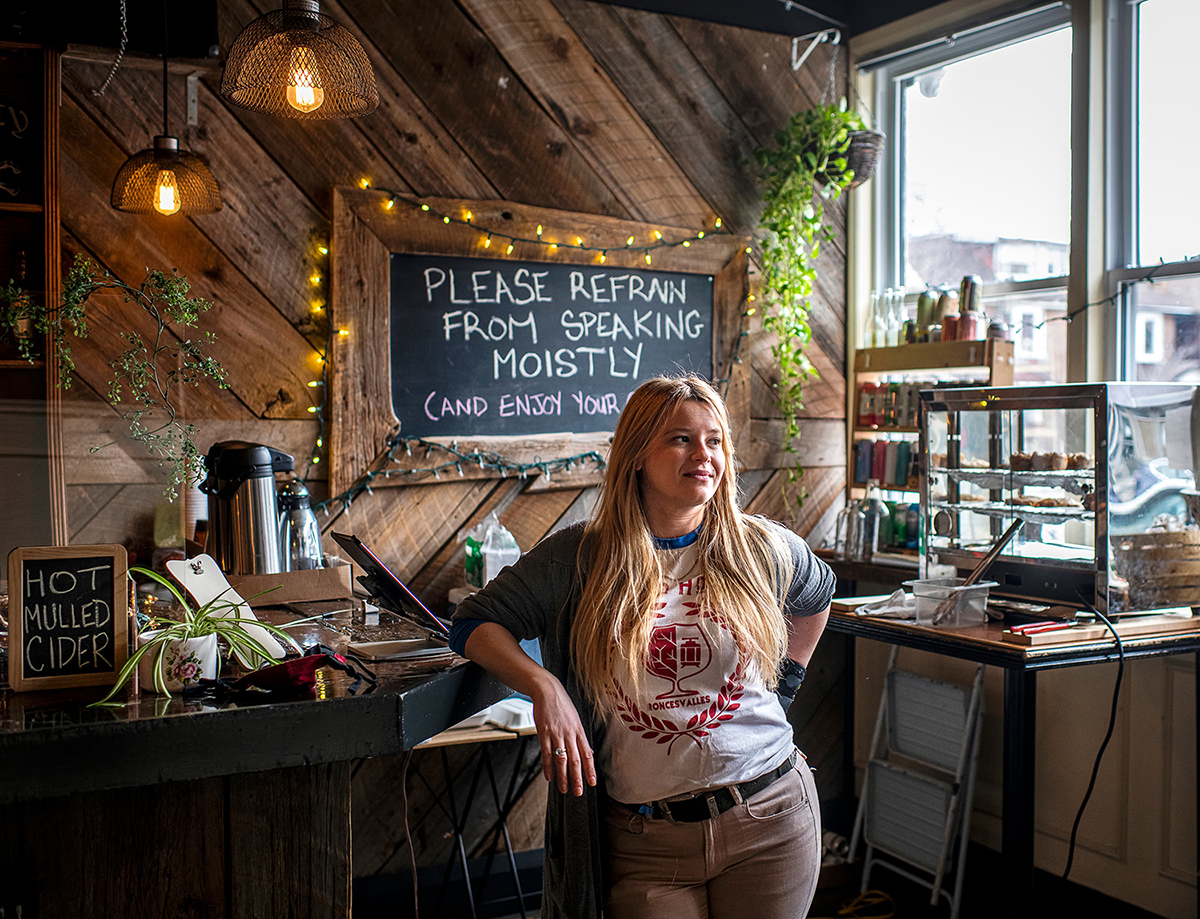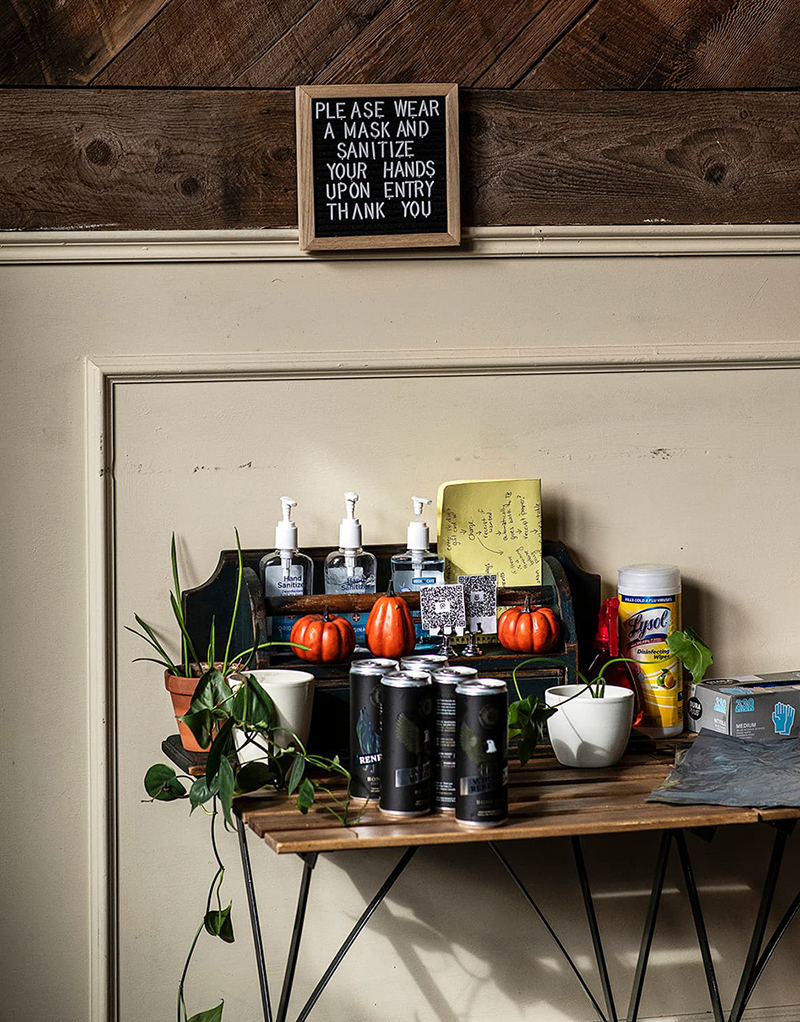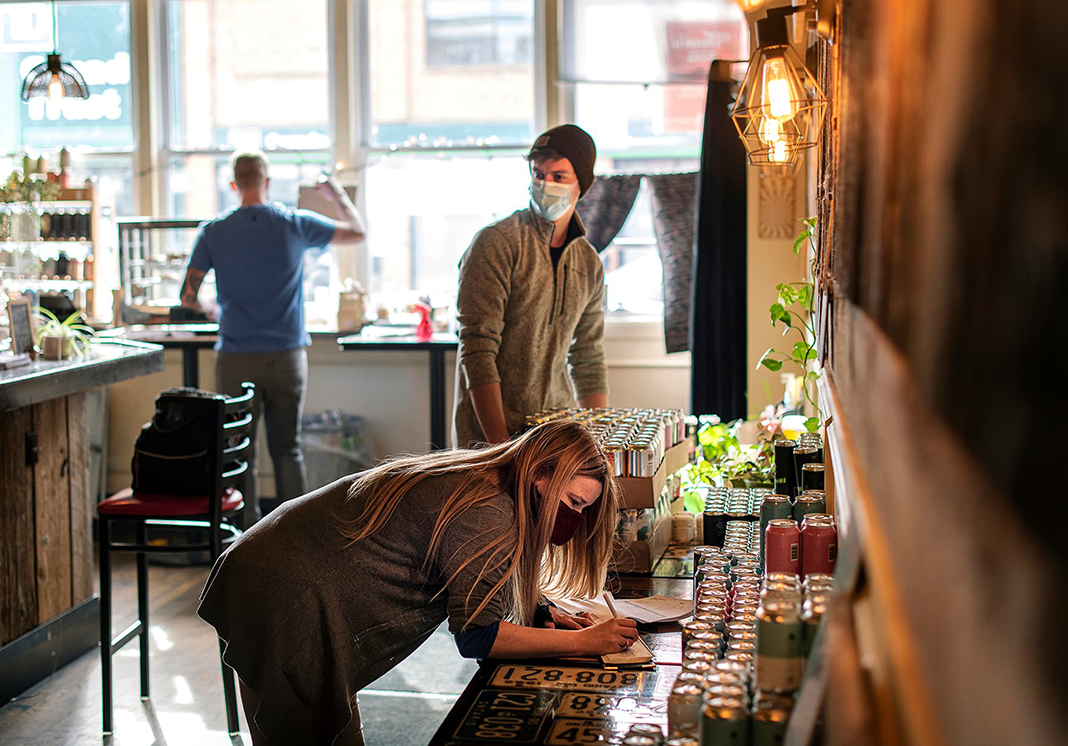
The Surprising Resilience of Restaurants
A U of T Mississauga study aims to identify the “secret sauce” that is helping many dining establishments stay open during the pandemic Read More
Early in the COVID-19 pandemic, Sasha Steinberg decided that keeping her bar’s kitchen open simply wasn’t worth it.
Steinberg (BA 2010 Victoria) owns Cider House in Toronto’s west end. Prior to the pandemic, she relied mainly on alcohol sales to keep her business afloat. But when the lockdown hit, in March of last year, she shut down the bar completely and temporarily laid off all her staff. Cider House reopened for takeout one day a week soon after, with Steinberg selling baked goods she made herself. When she and her co-owner opened their kitchen for three days a week in the late spring, however, it was clear that the effort wasn’t worth the cost.

“People weren’t coming to us for a full, hot meal, because we never were known for that,” Steinberg says, adding that, even on platforms such as Uber Eats, Cider House was only receiving three or four food orders a night. “We had to make some changes.”
Steinberg is one of thousands of restaurateurs across the city – and the country – whose life since COVID-19 hit has been defined by the “pandemic pivot:” adjusting one’s business model to accommodate restrictions due to the coronavirus. From closing, to half-opening, to serving hot meals, to turning into a bottle shop offering small grab-and-go items, which is Cider House’s current status quo, Steinberg’s business model has been in a constant state of flux. “I love the bottle shop concept,” Steinberg says, referring to the practice of selling alcohol to go, “but we’re still lucky if we break $500 a night.”
Shauna Brail, an associate professor at the Institute for Management & Innovation at U of T Mississauga, knows flexibility has been key to survival for restaurants, at least during the pandemic’s first wave. She and her team have developed “Toronto After the First Wave,” a research project that examined restaurant data on Yelp from May to November 2020. Among the report’s findings was the surprising fact that more restaurants opened than closed during these six months of the pandemic: 244 versus 214. 1
“It’s encouraging,” Brail says of the restaurant data, “and it shows a level of creativity. In order for restaurants and food service providers to survive, we need them to be innovative and find new ways of reaching customers.”

The Yelp data Brail’s team examined did not include information about whether a restaurant had its own website or if it offered delivery and pickup, which might have provided insight into why some businesses were able to weather COVID’s first wave. But Brail has some ideas. She says the main marker of success has been the ability to adjust – and fast.
“When you look at what restaurants and food service operators are doing well, they’re changing their menus to things that travel,” she says. “They’re changing how they are working, and who is working. There’s been growth in ‘ghost kitchens.’” Spaces like this, Brail explains, have eliminated the need to pay for a dining room – and dining room staff: “It’s a commercial kitchen that works strictly on takeout and delivery.”
Brail says restaurants have recognized the importance of having a strong digital presence – and this is where significant failures can take place. Some have struggled with setting up an efficient online ordering system. They might depend instead on services such as Uber Eats, which can take up to a hefty 30 per cent cut – a huge financial hit to already struggling restaurants. Business improvement areas and municipal governments have supported local businesses by helping them get online, Brail says, but whether a restaurant was able to access this assistance may have influenced (and may continue to influence) their survival.

Steinberg, who graduated from U of T with a double major in cinema studies and sociology and a minor in fine art, has worked in food service for more than a decade, and opened Cider House four years ago. She says she will continue to sell alcohol and is planning to hire back some staff and open a sidewalk patio this summer, as she did last year as part of the city’s CafeTO program. She points to the Canada Emergency Rent Subsidy as a primary reason why she’s able to remain in operation: “If we didn’t have that,” she says, “we would shut down for sure.”
Brail is hoping that “Toronto After the First Wave” will help influence policy decisions by demonstrating that the pandemic has already had an indelible impact on the city’s vitality. “It has real potential to demonstrate how we can use data to understand how the city is changing,” she says. Further research will be needed to determine exactly what policy interventions might look like: If the city wants to avoid the closure of another 214 restaurants, for example, it should determine what supports were used by the 244 restaurants that opened. Brail considers her work a stepping stone toward more research, driven by deeper data that can help prevent similar industry challenges in the future.
Brail believes, however, that more programs like the rent subsidy leveraged by Steinberg at Cider House are necessary. “The pandemic has shone a light on the things we’ve done well, and the things we’ve done badly,” Brail says. “We don’t have to accept that coming out of a pandemic will mean a return to where we were. We have an opportunity to think about where we want to go, as a city, as a society, and as a country. And we need this data to be able to make investments that actually get us to where we want to be.”






No Responses to “ The Surprising Resilience of Restaurants ”
Well written, insightful, hopeful article. Glad to see U of T making a difference